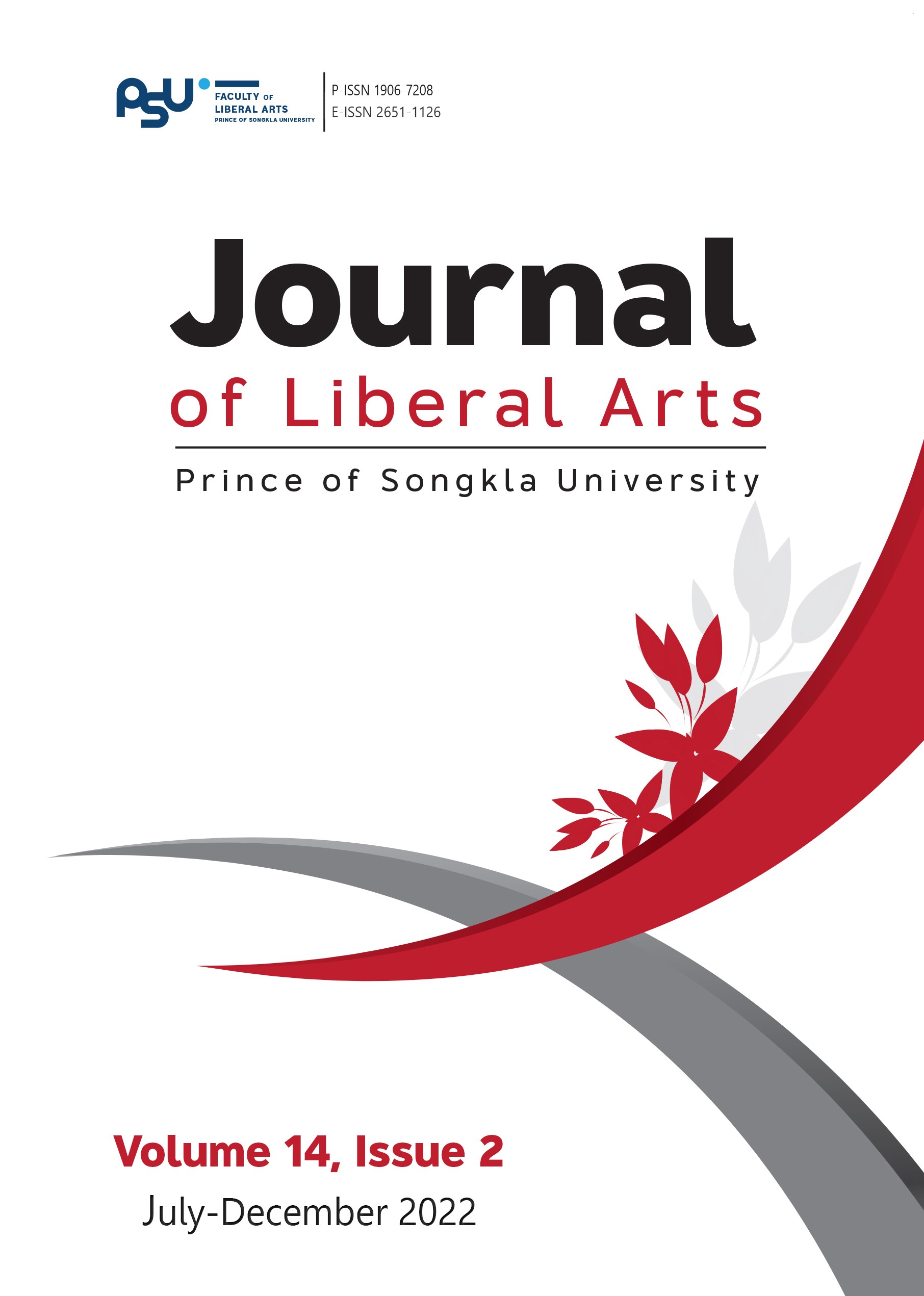The Relationship between Temple Public Spaces and Surrounding Communities: The Case of Songkhla Municipality
DOI:
https://doi.org/10.14456/jlapsu.2022.21Keywords:
public space, neighborhood concept, temple and communities, SongkhlaAbstract
The objective of this research was to investigate the roles of public spaces in temples in Songkhla Municipality in terms of relationships and utilization by the communities in the context of Songkhla society. The research was conducted by mixed-method and qualitative methodologies through in-depth interviews with community leaders, community representatives, temple abbots, and monk representatives from 18 temples, as well as entrepreneurs and citizens who used these public spaces. The samples of these populations were selected using purposive sampling. Physical data, locations, types, and periods of activities were collected and analyzed in the study. The results revealed that the temple public spaces serve important roles for the community. These public spaces are used for various activities for various periods of time. They are particularly used for physical, social, and commercial purposes, fostering relationships between the temples and the communities in three ways. Their sheer physical characteristic means that each space is available for people gatherings, establishing relationships with a link to their mental dimension. The spaces are also used for economic purposes. However, it was found that some of the temple spaces have been misused by the communities involved, a reflection of the shortcomings of policies designated by government agencies to improve quality of citizens’ life. It could be concluded that the cooperation among the related government offices, the temples and the communities can be served as a guideline to reduce future problems.
References
Athiphothi, K. (2005). Open spaces in Thai society. In Special Lecture Faculty of Architecture Chulalongkorn University. Bangkok, Thailand. [in Thai]
Chaijan, S., & Laiprakobsab, N. (2016). Public concepts of urban public space. Built Environment Inquiry Journal, 15(2), 71-83. https://architservice. https://architservice.kku.ac.th/ Kku.ac.th/Wpcontent/uploads/2017/02/05-Supachai.pdf. [in Thai]
Chiniratna, N., Saksung, A., & Thawonprasit, B. (2004). Songkhla slum community: Development and development guidelines. Parichart Journal, 2(16), 78-89. [in Thai]
Chowana, K., & Jiraprasertkun, K. (2017). Observations from a study on the phenomenon of public spaces in Kiriwong Village, Nakhon Si Thammarat Province. Veridian E-Journal Silpakorn University, 10(3), 1701-1719. https://he02.tci-thaijo.org/ index.php/Veridian-EJournal/article/view/110187 [in Thai]
Gehl, Y. (2013). Living city: Public spaces (Life between building). (Pakanan Sanakhan Rungsang, Translater). Li-Zenn Publishing. [in Thai]
Holdsworth, B. (2005). Continuous productive urban landscapes: Designing urban agriculture for sustainable cities. Architectural Press.
Jacobs, J. (1961). The death and life of great America cities. Penguin Books.
Jirathadsanakul, S. (2000). Temple: Thai architectural Buddhism (1st ed.). Silpakorn University Printing. [in Thai]
Kulchon, K. (2002). What is urban design-tracking for answers in 40 years (1st ed.). Silpakorn University Printing. [in Thai]
Nakwatchara, N. (1982). Temples in Bangkok: Changes in 200 years (1782-1982). Chulalongkorn University. [in Thai]
Natewutthikun, K. (2007). Development and types of public spaces. In S. Suwatcharaphinan, Architectural theory: Public spaces and social spaces (pp.28-53). Chiang Mai University Press, Chiang Mai. [in Thai]
Ngamwittayapong, O. Verayasobprasong, T., & Nonthakijnopphakao, N., (2016). Revive the temple, restore the city. Arsomsilp Institute and College of Development, Puey Ungphakorn, Thammasat University, Bangkok. [in Thai]
Office of the National Economic and Social Development Council. (2021). The National Economic and Social Development Plan. (The Twelfth Plan 2017-2021). https://www.nesdc.go.th/nesdb_en/ewt_dl_link.php?nid=4345. [in Thai]
Orantatthanamanee R. (2014). The concept of public spaces in western and eastern views. In S. Suwatcharaphinan, Architectural theory: Public spaces and social spaces (pp. 28-53). Chiang Mai University Press, Chiang Mai. [in Thai]
Paksukcharoen, K. (2008). Energy-saving shortcut alley: Small public space-social area of Thai communities [Conference proceedings (full paper)]. Regional and Urban Planning Academic Conference on Energy-Saving Cities, Faculty of Architecture, Chulalongkorn University. [in Thai]
Phasutip, P. (2009). Design and management of physical environment to enhance interaction and neighborliness: Case study
of high price residential estates outer Bangkok area [Unpublished master’s thesis]. Thammasat University.
http://dric.nrct.go.th/Search/SearchDetail/264548 [in Thai]
Piromruen, S. (2013). Planning and designing public spaces in the city: Lan Mueang Bangkok. Silpakorn University Printing.
[in Thai]
Sangsehanat, S. (2018). Sense of place and morphological types of Bangkok. Veridian E-Jourmal Silpakorn University. 11(3), 2564-2578. https://he02.tci-thaijo.org/index.php/Veridian-E-Journal/article/view/161265/116259 [in Thai]
Sukolrattanamethee, S. (2015). Elements in designing an environment that promotes a sense of community. NAJUA: Architecture, Design and Built Environment, 29(475), 476-488. https://so04.tci-thaijo.org/index.php/NAJUA-Arch
/article/view/44316. [in Thai]
Supanan, S. (2011). Space, time, identity, and social meaning. Journal of Communication Arts, 29(3), 186-204. https://so02.tci-thaijo.org/ index.php/jcomm/article/view/86161/68439 [in Thai]
Suwatcharapinun, S., & Danhongmankorn, W. (2019). The synthesis of theoretical connection of being, space, and everyday life. Journal of Environmental Design, 6(2), 21-35. https://so02.tcithaijo.org/index.php/jed/article/view/191030/160596 [in Thai]
Wanniphodom, S. (2011). Social-cultural development of Thailand. Muang Boran. [in Thai]
Downloads
Published
How to Cite
Issue
Section
License
Copyright (c) 2022 nattaneeporn noisangiam

This work is licensed under a Creative Commons Attribution-NonCommercial-NoDerivatives 4.0 International License.
The authors retain the copyright to their article but the Journal of Liberal Arts, Prince of Songkla University reserves the exclusive rights to first publication.






